All about caring for roses
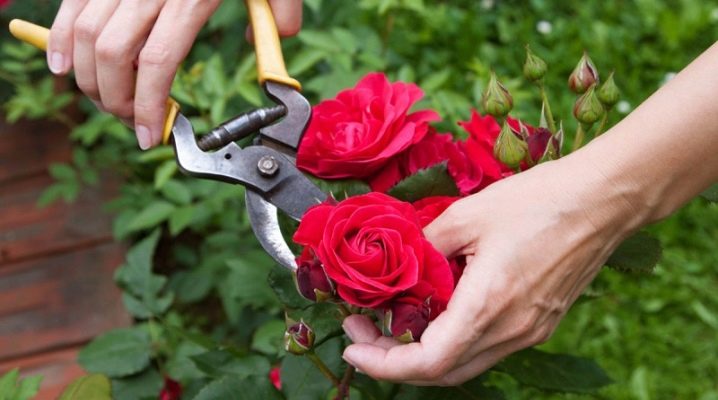
The rose is often called the queen of flowers. The plant is really capricious. Therefore, in order for the flower to delight the gardener with its flowering as long as possible, he must provide proper care.
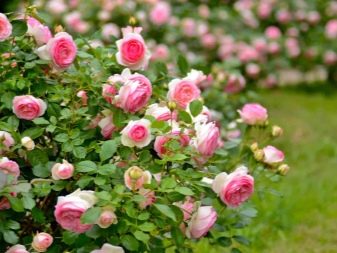
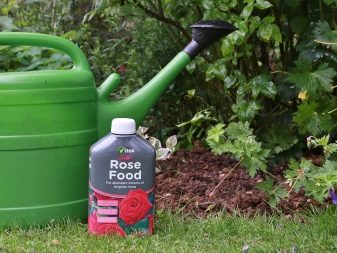
Watering features
First of all, roses need to be watered regularly. In the spring, the soil in the area with roses is watered every 2-3 weeks. At the same time, watering should be abundant. In hot weather, water the plants more often. It all depends on the specifics of the weather. Waterlogging of the soil should not be allowed. This can lead to the development of fungal diseases. Water for irrigation is used warm and settled.
You can simplify the process of caring for flowers by mulching the soil next to the roses. The mulch is placed next to the stems of the plant after the first spring feeding. Peat, sawdust or dry hay are usually used for this purpose. A dense layer of mulch also protects plants from weeds. If the gardener uses peat or dry manure to cover the flowers, then it also serves as a good source of nutrients that enter the soil with each watering.
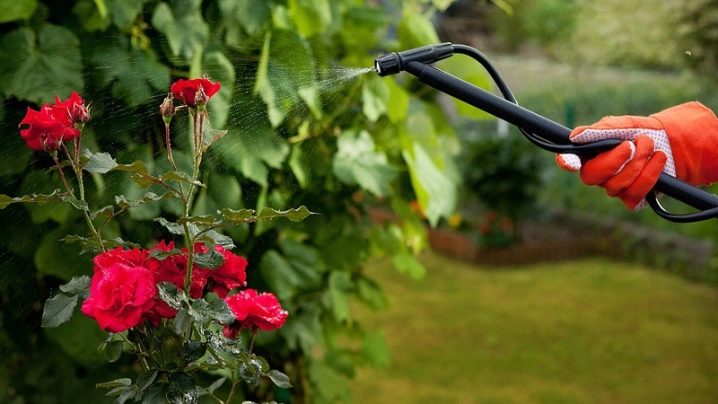
Nuances of feeding
Like other flowers, open field roses need to be fed regularly. The choice of fertilizer depends on the season.
- Spring. The first feeding is carried out at the beginning of the warm season. At this time, plants need nitrogen. This growth promoter promotes the growth of green mass and the appearance of the first buds. The rose responds well to feeding with rotted manure or compost. They should be used in small quantities, because an excess of organic fertilizers will only harm the plants. Organic matter can be alternated with mineral dressings. This will only benefit the flowers.
- Summer. At this time, the flowers growing in the country are most conveniently fed with complex fertilizers. For the rose to grow strong and healthy, it is important to choose foods high in potassium and phosphorus. It is possible to determine what nutrients the flowers are lacking by looking at the leaf. So, if the plant begins to turn pale and wither, it means that it lacks iron and magnesium. At this time, roses can be fed with potassium permanganate, diluted with water or iron sulfate.
Top dressing is recommended to be applied to the soil in liquid form. This is best done immediately after watering the flowers.
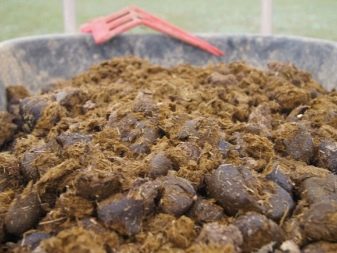

Pruning
In spring, garden roses need sanitary pruning. It must be carried out before buds begin to bloom on the green shoots. You need to cut roses in the first year after planting. Plants are carefully examined. It is necessary to remove all dry and frost-bitten shoots. If most of the stem has been cut, the cut should be treated with garden varnish.
Formative pruning also has a good effect on the condition of roses. It must be carried out, taking into account the varietal characteristics of the flower.
- Hybrid tea roses. Shoots of flowers belonging to this group are shortened by a third of the length.
- Groundcover. Such flowers are cut every five years. In the process, the gardener cuts off all the shoots, leaving only a short stump 25-35 centimeters high above the ground.
- Shrub. Once blooming roses do not need pruning. The shoots of perennial plants are shortened by a third.
- Repaired. These flowers are thinned regularly. The main shoots are carefully shortened. They do this every three years.
- Climbing. When pruning, gardeners remove all shoots older than five years. Only 3-4 buds are left on young branches.
Use a sharp garden shears or pruner to trim the flowers. The cut vegetation can be added to the compost heap.
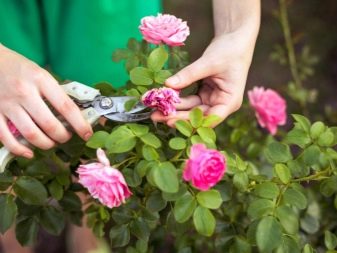
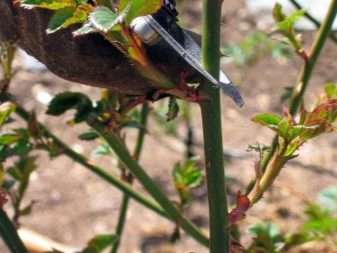
How to prepare for winter?
They have been preparing roses for winter since mid-July. At this time, the plants are no longer fed with nitrogen-containing dressings. In late summer, flowers are fertilized with potassium-containing foods. Such feeding contributes to the lignification of the shoots. In the middle of autumn, roses must be spud. To begin with, the gardener needs to tear off the foliage from the base of the shoots. Further, the plants should be pollinated with wood ash.
After that, the bushes are spud with a mixture of sand and earth. Peat is not used for this purpose. It actively absorbs moisture, which quickly freezes. In September, the tops of the growing shoots must be pinched. The termination of their growth also contributes to the maturation of wood and an increase in the frost resistance of plants. Climbing roses in mid-October are carefully removed from the supports. After that, they are bent to the ground, trying not to break the stems. Spruce branches or boards must be laid under the branches.
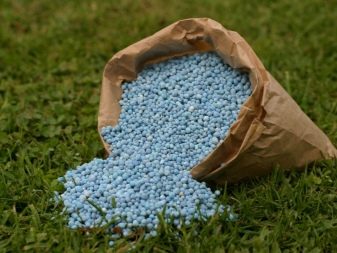

How to properly cover and remove cover?
Most roses need timely shelter. Exceptions are park, ground cover and polyanthus roses. It is enough to spud them in a timely manner. Curly, spray and climbing roses in the Moscow region and central Russia are covered in the second half of October. Before sheltering, the stems are carefully trimmed. The foliage is removed from the shoots. After that, the stems are gently lowered to the ground. A film is laid between the ground and the shoots. This helps protect them from excess moisture.
From above, the roses are covered with spruce branches. To prevent it from attracting rodents, poison is laid out next to the shelter. After the first snowfall, a small amount of snow is thrown onto the shelter. It is necessary to remove the shelter from the flowers in stages. At the end of March, spruce branches or any other covering material are removed from the bushes, and then carefully examined. If there are traces of mold on them, they must be removed with a damp cloth dipped in copper sulfate. If the shoots were badly damaged, they are carefully cut out.
Further, the roses are re-covered. At this stage, the flowers need shelter to protect them from the sun. If done correctly, plants won't wake up too early. You can remove the shelter after the soil warms up well. This is best done in cloudy weather. After removing the shelter, the bushes and the soil next to them must be treated with fungicides. This will help strengthen the immunity of the flowers.
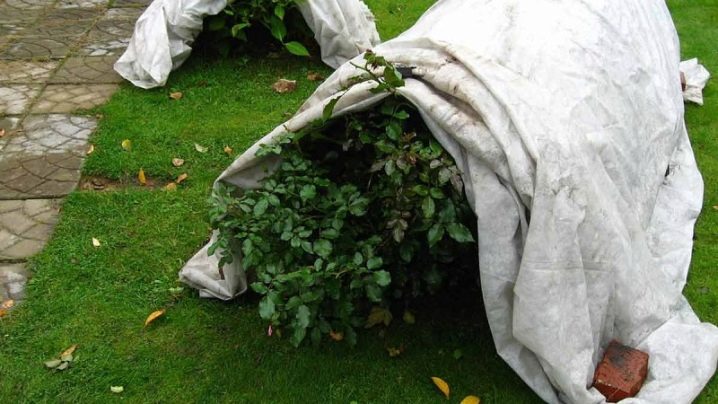
Diseases and pests
Garden roses are important to learn how to protect against disease. The following diseases are dangerous for these flowers.
- Powdery mildew. This disease develops rapidly in high humidity conditions. A dense white bloom appears on foliage and stems. Over time, it begins to darken. The foliage curls at this time. To combat this disease, plants are treated with copper sulfate or similar preparations.
- Gray rot. This disease often affects roses during flowering. Sick roses become covered with a mold-like bloom. The buds fade quickly. Noticing the first signs of this disease, the affected parts of the plant are carefully cut off. After that, the flower is treated with a soapy solution with copper sulfate.
- Black spot. This is another common disease. Dark brown circles appear on sore flowers. It is very difficult to cure it. To begin with, remove all dead parts of the plant. After that, the flower is sprayed with fungicides.
- Rust. This disease affects both young and adult plants. At the initial stage of rust development, it can be fought with milkweed juice. They are smeared with dark spots on the leaves.
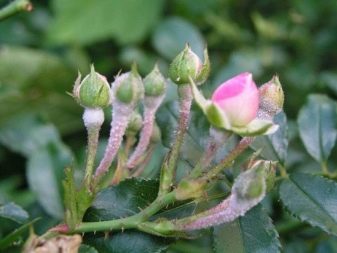
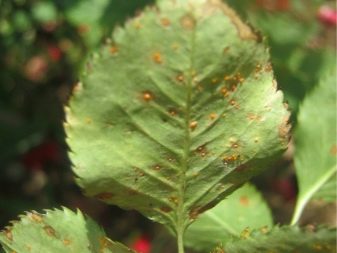
Flowers also need protection from pests. The secrets of dealing with most insects are familiar to experienced gardeners.
- Aphid. These small pests are dangerous for many plants. They settle on the inside of the leaves and feed on their sap. For preventive treatment against aphids, plants are sprayed with soapy water. You can add a decoction of wormwood, marigold or nightshade to it. This method will help get rid of pests only if there are not very many of them. In case of severe infection, gardeners are advised to use industrial preparations.
- Caterpillars. These insects quickly damage the foliage of roses, leaving small holes on it. Caterpillars are usually harvested by hand. If there are a lot of pests on the site, mustard powder is scattered next to the rose bushes.
- Sawfly. As a result of the activity of these pests, the shoots gradually dry out. Proven insecticides are used to control them. They are used to cultivate not only plants, but also the land next to them. This should be done with protective gloves and a mask.
- Spider mite. It is very easy to notice traces of the activity of this pest. The lower part of the leaf plate is covered with a thin light cobweb. When starting pest control, it is carefully wiped off the sheets. After that, the roses are sprayed with Fitoverm. You need to process the bushes several times in a row, until the insects are completely destroyed.
To repel pests, you can plant lavender, marigolds or calendula next to roses.
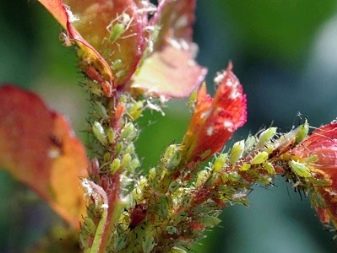

Tips for caring for different species
Novice gardeners who grow different types of roses should pay attention to the features of different flowers.
- Park. Decorative roses have good winter hardiness. Therefore, flowers growing in regions with a warm climate are not covered for the winter. They also do not need regular pruning.
- Hybrid tea. Delicate tea roses are distinguished by long flowering. To increase the attractiveness of these plants, they are fed regularly. In autumn, the plants are reliably covered. If this is not done, they can completely freeze out.
- Floribunda roses. These roses are necessarily planted in the sun. It is almost impossible to grow beautiful flowers in the shade. Plants need to be pruned regularly. After all, this procedure promotes active flowering and growth of basal shoots.
- Groundcover. This variety of roses is one of the most unpretentious. Plants are distinguished by increased immunity to diseases and cold resistance. Therefore, the cultivation of these street roses can be trusted even to a beginner.
- Shrub. These roses are most often used as hedges. They are pruned several times per season. In the spring, gardeners carry out formative pruning, removing all damaged branches. In the summer, dried buds are removed and the stems are thinned. In the autumn, the bush is re-examined. At this stage, it is cleared of all branches that interfere with the normal development of a bush rose.
- English. These plants are not resistant to rain and too much watering. They do not like such roses and heat. Therefore, they must be grown in partial shade. Flowers are pruned annually. 3-4 years after planting, the gardener usually manages to form a beautiful spreading bush.
- Climbing. These roses are quite fragile. You must trim them carefully. In the spring, gardeners carefully shorten the lashes, and in the fall they remove the wilted flowers.
If you properly care for the roses growing in the garden or greenhouse, they will always delight their owners with lush flowering.
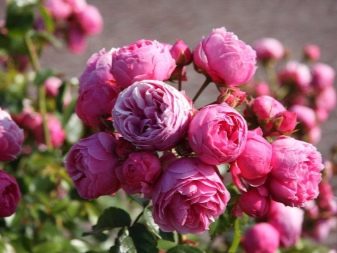


































































































The comment was sent successfully.